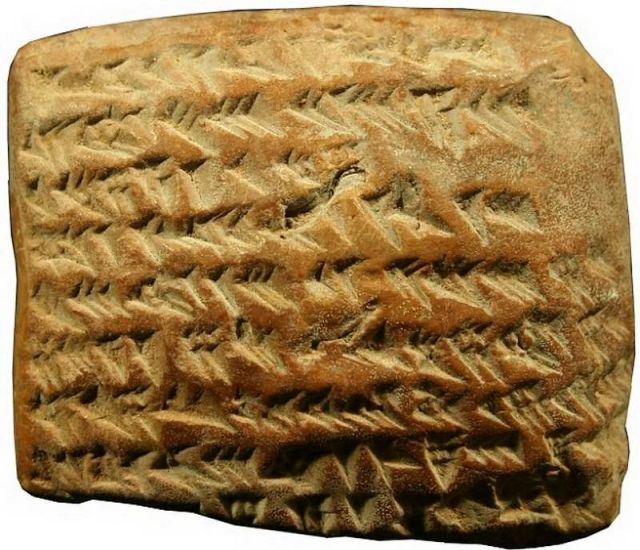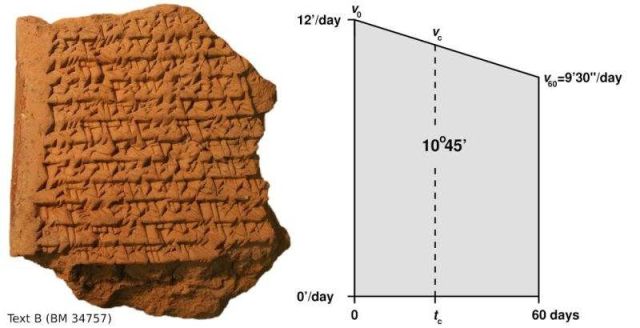Latest evidence suggests that Babylonians invented Astronomical geometry. They tracked Jupiter with advanced tools.
Scientists discovered in ancient tablets, dated from 350 to 50 BCE, that Babylonian astronomers calculated Jupiter’s position with advanced tools, like trapezoids.
When the measurements were made, they captured the ‘daily displacement’ of the giant planet as it moved across the sky, measured as degrees per day. Credit Mathieu Ossendrijver
Professor Mathieu Ossendrijver, a specialist in Babylonian astral math at Berlin’s Humboldt University, said the ‘tablets have redefined the history books.’
“I couldn’t understand what they were about. I couldn’t understand anything about them, neither did anyone else. I could only see that they dealt with geometrical stuff.
The Babylonian trapezoid procedures can be viewed as a concrete example of the same computation.
They also show that Babylonian astronomers did, at least occasionally, use geometrical methods for computing planetary positions.
The idea of computing a body’s displacement as an area in time-velocity space is usually traced back to 14th-century Europe. I show that in four ancient Babylonian cuneiform tablets, Jupiter’s displacement along the ecliptic is computed as the area of a trapezoidal figure obtained by drawing its daily displacement against time.
This interpretation is prompted by a newly discovered tablet on which the same computation is presented in an equivalent arithmetical formulation. The tablets date from 350 to 50 BCE.”
Credit wikimedia
source Science








Leave A Comment